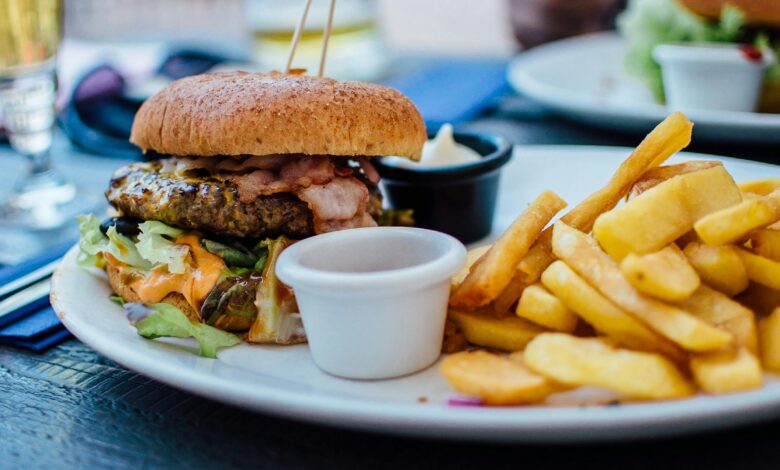The Emotional Journey of Food: More Than Just a Meal

Introduction
1.1 Setting the Stage for Food
Food is more than just a necessity; it’s a universal language that connects people, cultures, and generations. From the comforting smell of a homemade meal to the joy of sharing a feast with loved ones, food has a unique way of touching our hearts. Let’s embark on a journey to explore the deep emotional connection we have with food and how it shapes our lives.
1.2 Connecting Emotionally with the Significance of Food
Food is at the heart of our most cherished memories. It’s the soup your grandmother made when you were sick, the cake at your best friend’s birthday, and the special dish you share every holiday. Our relationship with food is deeply personal and incredibly powerful. It evokes feelings of love, comfort, and joy, and sometimes even nostalgia and longing.
Section 1: The Emotional Impact of Comfort Food
2.1 Unpacking the Depths of Comfort Food
Comfort food is like a warm hug on a cold day. It’s the macaroni and cheese after a hard day at school or the hot chocolate by the fire during winter. Comfort food brings a sense of security and peace. It’s often tied to our childhood, reminding us of simpler times when a favorite dish could make everything better.
2.2 Connecting with Comfort Food on a Personal Level
Think about your favorite comfort food. What memories does it bring back? Maybe it’s your mom’s homemade chicken soup, the aroma filling the house, making you feel safe and loved. Or perhaps it’s a slice of apple pie, reminiscent of family gatherings filled with laughter. These foods are more than just meals; they are anchors to our happiest moments.
Section 2: The Cultural Significance of Food
3.1 Exploring the Nuances of Cultural Food Traditions
Every culture has its own unique cuisine that tells a story of its people. From spicy curries in India to delicate sushi in Japan, food is a celebration of cultural identity. It’s about more than taste; it’s about tradition, history, and community.
3.2 Relating Cultural Food to Real-Life Experiences
When we travel or try new cuisines, we are not just eating; we are experiencing a new culture. Think of the first time you tried a dish from a different country. The flavors, the textures, and the presentation all tell a story. Food is a gateway to understanding and appreciating the diversity of the world.
Section 3: The Role of Food in Celebrations
4.1 Delving Into the Heart of Celebratory Foods
Food is at the center of every celebration. Birthdays, weddings, holidays – these special occasions are marked by shared meals and festive dishes. Celebratory foods are often rich, indulgent, and crafted with love, symbolizing the joy and importance of the event.
4.2 Creating Emotional Resonance with Celebratory Foods
Imagine a wedding cake, each layer carefully designed, representing the layers of love in a marriage. Or think about a Thanksgiving turkey, golden and juicy, surrounded by family and friends expressing gratitude. These foods are more than delicious; they are symbols of love, happiness, and togetherness.
Section 4: The Healing Power of Food
5.1 Immersing Ourselves in the Healing Aspects of Food
Food has the power to heal, not just physically, but emotionally. Nutritious meals can boost our health, but the act of cooking and eating can also soothe our souls. When we are stressed or sad, preparing a favorite dish or enjoying a meal with loved ones can provide comfort and relief.
5.2 How Healing Foods Touch the Essence of Humanity
Consider the tradition of bringing meals to someone who is grieving or unwell. This act of kindness shows how deeply food is intertwined with care and compassion. Healing foods, like a warm bowl of soup or a comforting cup of tea, nurture both body and spirit, embodying our humanity and empathy.
Section 5: FAQs (Frequently Asked Questions)
6.1 Addressing the Curiosities Surrounding Food
Q: Why does food evoke such strong emotions?
A: Food is closely tied to our senses and memories. The taste, smell, and texture of food can trigger powerful recollections and emotions, reminding us of past experiences and the people we shared them with.
Q: How can I create more meaningful food experiences?
A: Focus on the process and the people involved. Cooking together, sharing recipes, and enjoying meals without distractions can deepen your connection to food and create lasting memories.
Q: What makes comfort food so comforting?
A: Comfort food often has a nostalgic element, reminding us of home and family. It’s usually associated with positive experiences and provides a sense of familiarity and security.
Q: How does food bring people together?
A: Sharing a meal is a universal way of fostering connection. It provides an opportunity to communicate, celebrate, and bond with others, creating a sense of community and belonging.
6.2 Infusing Compassion into Clear and Detailed Responses
Answering questions about food with empathy helps people feel understood and valued. Recognize the emotional aspects of their queries and respond with kindness and care. Food is deeply personal, and addressing it with compassion enhances the reader’s connection to the topic.
Section 6: Table of Contents
7.1 Crafting a Roadmap of Emotionally Charged Exploration
- Introduction
- Setting the Stage for Food
- Connecting Emotionally with the Significance of Food
- Section 1: The Emotional Impact of Comfort Food
- Unpacking the Depths of Comfort Food
- Connecting with Comfort Food on a Personal Level
- Section 2: The Cultural Significance of Food
- Exploring the Nuances of Cultural Food Traditions
- Relating Cultural Food to Real-Life Experiences
- Section 3: The Role of Food in Celebrations
- Delving Into the Heart of Celebratory Foods
- Creating Emotional Resonance with Celebratory Foods
- Section 4: The Healing Power of Food
- Immersing Ourselves in the Healing Aspects of Food
- How Healing Foods Touch the Essence of Humanity
- Section 5: FAQs
- Addressing the Curiosities Surrounding Food
- Infusing Compassion into Clear and Detailed Responses
- Section 6: Table of Contents
- Crafting a Roadmap of Emotionally Charged Exploration
- The Art of Automatic Generation: Table of Contents Using English
- Section 7: Internal Links Functionality
- The Emotional Thread of Connection: Benefits of Internal Linking
- Navigating the Emotional Landscape: How to Create Heartfelt Internal Links Using English
- Conclusion
- A Heartfelt Recap of the Emotional Journey
- Glimpses into the Emotional Future of Food
7.2 The Art of Automatic Generation: Table of Contents Using English
Creating a table of contents helps guide readers through the emotional journey of the article. It provides a clear roadmap, making it easier to navigate the content and find specific sections that resonate most with them.
Section 7: Internal Links Functionality
8.1 The Emotional Thread of Connection: Benefits of Internal Linking
Internal links enhance the reading experience by connecting related content. This not only improves navigation but also deepens the emotional connection by allowing readers to explore topics in greater detail.
8.2 Navigating the Emotional Landscape: How to Create Heartfelt Internal Links Using English
To create effective internal links, think about the reader’s journey. Link to related sections that provide further insight or expand on a topic. This keeps the reader engaged and fosters a more immersive experience.
Conclusion
9.1 A Heartfelt Recap of the Emotional Journey
Food is much more than sustenance; it’s an emotional journey that connects us to our past, our culture, and each other. From the comforting embrace of our favorite dishes to the celebratory meals that mark our milestones, food is intertwined with our most precious memories.
9.2 Glimpses into the Emotional Future of Food
As we continue to explore and innovate with food, its emotional impact will only grow stronger. Whether through new culinary experiences, sustainable practices, or the continued tradition of sharing meals with loved ones, food will remain a powerful force in our lives, nourishing not just our bodies, but our hearts and souls.
